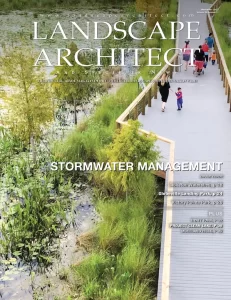 So this weekend I got to glimpses into actual developments on the funding for beaver restoration in California. The first came when I heard a friend of this website and beavers in general is sitting for his second interview tomorrow for CDFW’s new Beaver Restoration Program. And I thought WHOA it’s really happening.
So this weekend I got to glimpses into actual developments on the funding for beaver restoration in California. The first came when I heard a friend of this website and beavers in general is sitting for his second interview tomorrow for CDFW’s new Beaver Restoration Program. And I thought WHOA it’s really happening.
Then I got a early scan of the article friend Lisa Owen’s Viani wrote for Landscape Arcitecture about the project overall and I realized that the beaver world as we know it was really changing.
New Funding will create dedicated staff to support colonies of California’s Climate warrior Herbivores
 When governor Gavin Newsom released his budget in June it contained a small but mighty line item: 1.67 million for fiscal year 2022-2023 to support a new beaver restoration program. The program which will receive 1.44 million the following fiscal year will fund five new permanent positions in the California Department of Fish and Wildlife for monitoring and restoring beavers as well as equipment for tagging and relocating beavers and monitoring their health.
When governor Gavin Newsom released his budget in June it contained a small but mighty line item: 1.67 million for fiscal year 2022-2023 to support a new beaver restoration program. The program which will receive 1.44 million the following fiscal year will fund five new permanent positions in the California Department of Fish and Wildlife for monitoring and restoring beavers as well as equipment for tagging and relocating beavers and monitoring their health.
So there it is, In black and white. Really happening and maybe an actual friend of this website and beavers themselves will get one of those jobs. Lisa does a good job with the article talking to all the usual suspects but this quote made me pause;
[Emily] Fairfax who has studied beavers and wildfire resilience says there are plenty of areas, especially in Northern California and the Sierra Nevada Mountains where fire risk is extremely high and watersheds and streams are severally degraded. It is in areas like these that beavers can really help…
As long as care is taken to carefully relocate beavers from areas like the Sacramento-San Joaquin river delta, where they have been known to cause conflicts for landowners, these ecosystem engineers can thrive with only a bit of habitat.
Which of course got my attention. Because those could have been OUR beavers. And more than this, what happens to a beaver in the delta, whose never lived through a winter freeze and knows nothing of keeping a food cache when it is suddenly transported to the snowy sierras? Obviously there’s no time for a learning curve when you are trapped in your lodge frozen and starving. Our beavers never kept a food cache. What would have happened to them if they were moved to a stream where it suddenly froze solid?
This makes me want to start lots of conversations among folks who might know. Obviously there’s an instinctive part of cacheing food – but I think it might get triggered by a social message from another beaver whose doing it too. Like a kind of fixed action pattern. If it didn’t beavers in temperate climates like Napa and Sonoma would do it too, right?
Let’s not use our shiny new beaver dollars to move delta beavers into the snow so they can starve to death, okay?
The state’s proposal is poised for success, Fairfax says, “It’s not just about relocation or coexistence, it’s the whole beaver package, meeting with people, doing outreach, hiring staff, doing it right. This is the time we have a spotlight on us as a state for beaver work.”
Well I like that part a LOT! Just don’t move all our delta beavers please. We like them.
















































